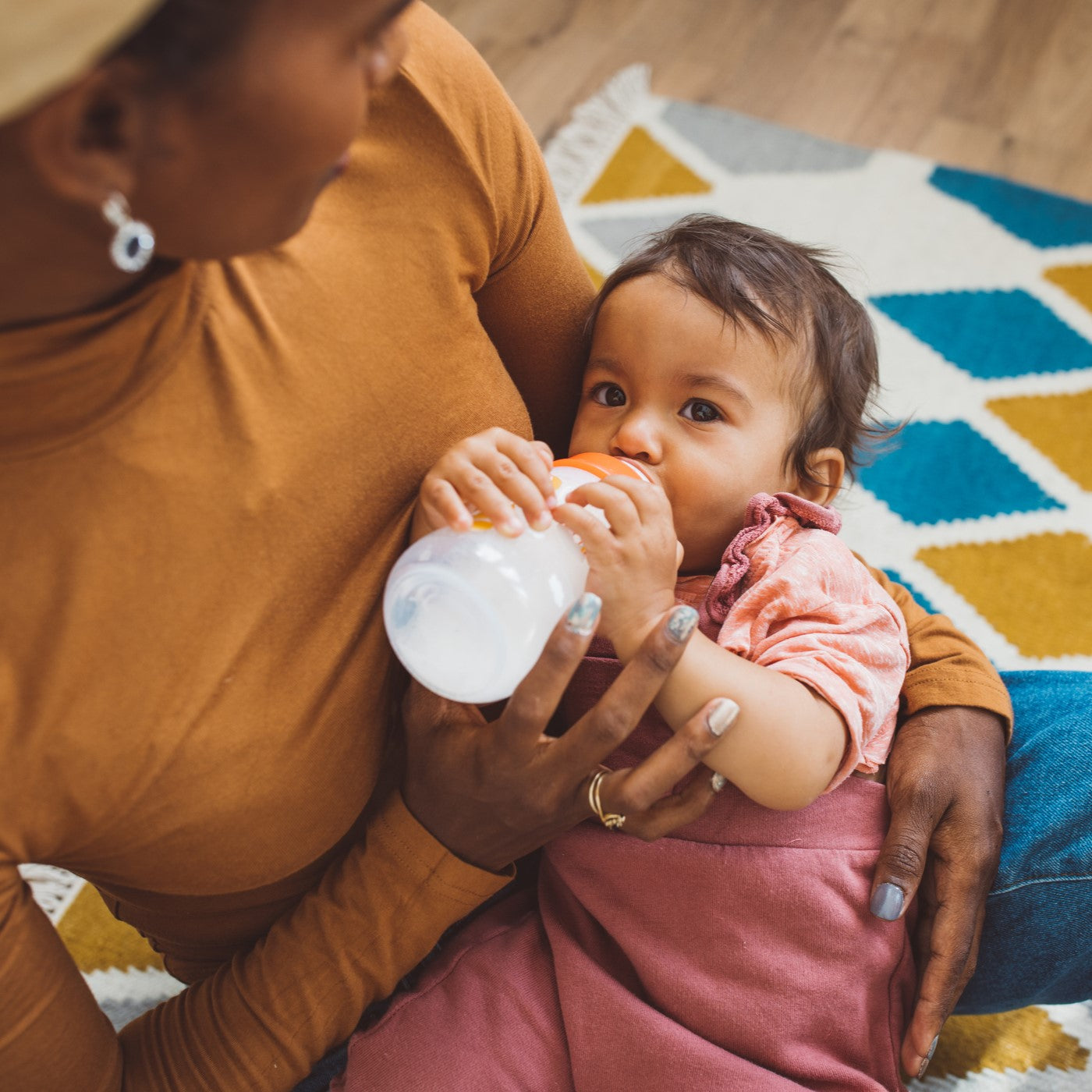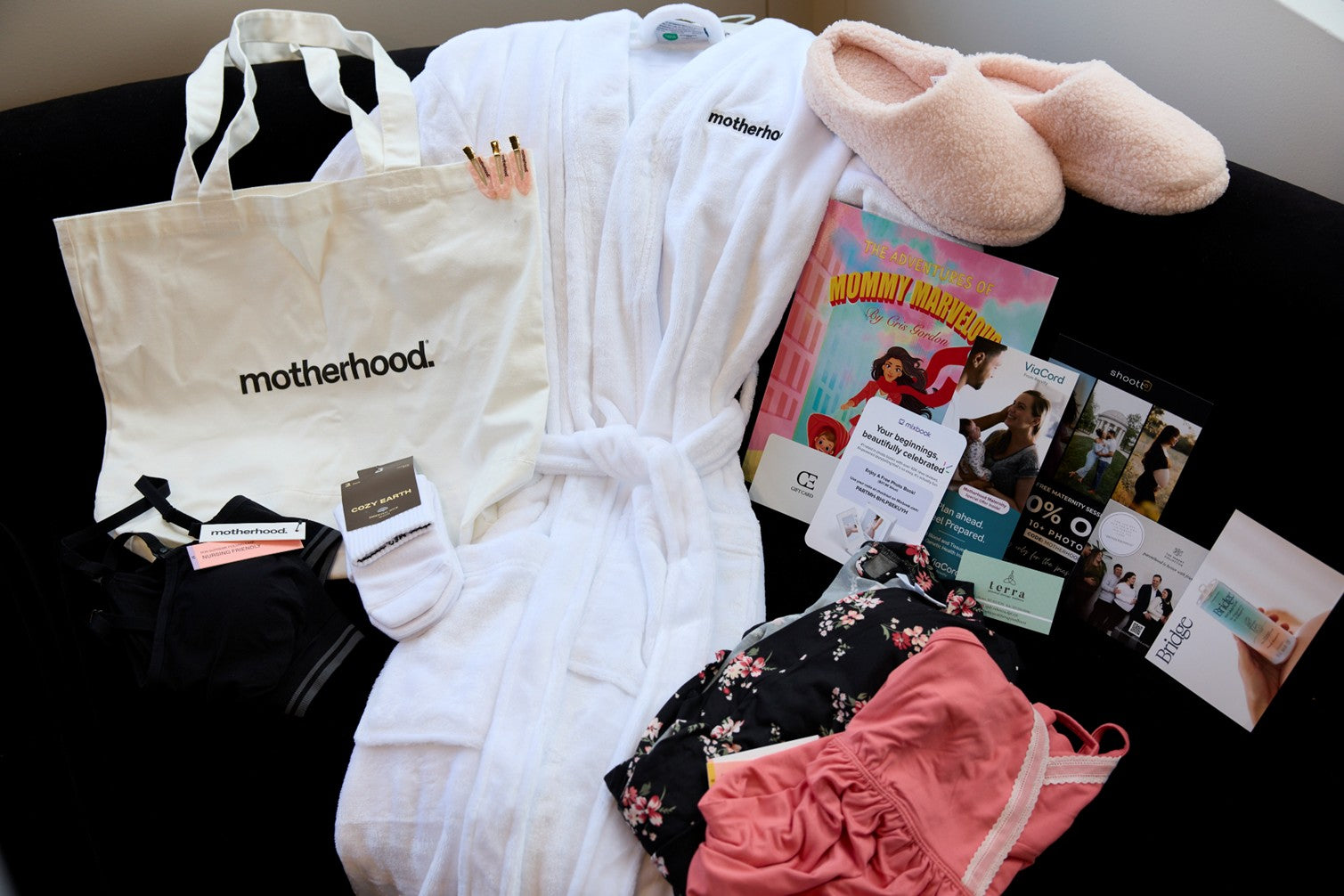Our Expert:
Dr. Mantravadi Ahimsa
PEDIATRICIAN
Dr. Mantravadi Ahimsa is on a mission to banish plastic table wear from your kitchen. The pediatrician and mom of three created Ahimsa Home, a collection of colorful stainless steel plates, bowls, cups and cutlery inspired by the traditional Indian flat wear she used to eat with growing up. We asked Dr. Ahimsa how parents can do their best to protect their kids from harmful chemicals found in everyday items and how to make mealtime a healthy and enjoyable experience for all family members. Hint: Just the sheer act of eating meals together is one of the best ways to raise happier, healthier kids. Read on for more of her easy and super-informative tips.
How old are your children?
9,9 and 6
Why did you choose a pediatric specialty?
What drew me to pediatrics was that this field of medicine has an impact on someone’s life in such a profound and lasting way - identifying things at such an early age and intervening to improve their health is the most “pay it forward” type of medicine you will find. For example, identifying low thyroid hormone in a newborn and treating them properly leads to a healthy normal life for that child - but without proper care, that baby’s brain development is delayed and significant intellectual disabilities occur.
This is why early intervention for things like hearing and speech is also so important. In pediatrics, you can truly make a positive impact on so many of a child’s future years. Caring for children is the best investment we can make in the future and pediatrics combined my love of science, children and advocacy in a way that has brought me such joy and fulfillment.
How has pediatrics changed over the past decade?
As physicians and scientists, we never stop learning because often, there is still so much to be discovered. I think over the past decade we have gained so much knowledge about how children grow and develop and there is an increasing focus on prevention rather than just treatment. We are learning how lifestyle and the environment is impacting children in significant ways. The food they eat, the physical activity they need, the impact of technology on growing minds - all these things are making an impact on a child’s health. Pediatrics is evolving to focus on a more holistic approach to children’s health now more than ever.
What are the top 5 chemicals parents should be aware of and how can we do our best to safeguard our children from them?
When functioning normally, the endocrine system works with other systems to regulate our body’s healthy development and function throughout life. It is particularly important for kids as childhood is a crucial time for proper growth and development. Endocrine-disrupting chemicals (EDCs) are substances in the environment (air, soil, or water supply), food sources/foodware/packaging, personal care products, and manufactured products that interfere with the normal function of your body’s endocrine system).
I’ll focus on endocrine disrupting chemicals at mealtime because this is the most bang for your buck in terms of making small simple changes to protect your child’s hormone system. The unfortunate truth is that even at low doses, EDCs are harmful to human health so making small changes today can lead to a big impact on your family’s health.
I like to think of families of chemicals because if you try to eliminate one like BPA, we are not really solving the problem since we are still exposed to all the substitutes like BPS, BPZ and others that are just as bad and in some cases, worse than BPA itself.
- Plastic chemicals: Bisphenols, Phthalates, Perchlorates are all chemicals used to make plastic. The American Academy of Pediatrics recommends to avoid plastic and rather use glass or stainless steel to serve food, especially hot food as heat increases the leaching of chemicals further into our children’s food. Swap out those plastic children’s dishes for safer, more sustainable Ahimsa stainless steel!
- Perfluorochemicals (PFCs): These chemicals are found in Non-Stick Food Wrappers, Microwave Popcorn Bags, and Old Teflon Cookware. Swap out non-stick cookware for safer materials like stainless steel and cast iron instead. And next time you need popcorn for family movie night - pop it yourself on the stove using kernels instead of the microwavable bags.
- Heavy metals: Metals are found naturally in the earth's crust. They also are released into our environment as pollution and get into the water and soil used to grow food. Metals can also get into food from food manufacturing and packaging. Some of the most common metals that get into food include arsenic, lead, cadmium and mercury. To help reduce your child’s exposure to toxic metals you can breastfeed if possible (avoid/limit formula), avoid/limit fruit juice and rather serve sliced/pureed whole fruits, make healthy fish choices, and offer a variety of foods (eating a variety of healthy foods that are rich in essential nutrients can lower the exposure to toxic metals and other contaminants found in some foods).
- Pesticides/Herbicides: These are designed to be toxic to pests as farmers grow food - the most recognized one is glyphosate. If you want to minimize your family’s exposure to harmful chemicals, choosing organic food when possible is best.
- Nitrates/Nitrites: These are preservatives and color enhancers, especially to cured and processed meats, fish and cheese. Try to avoid processed meats, such as hot dogs, ham and meats in pre-packaged meals, especially during pregnancy.
How can parents get a head start on teaching children to be mindful of their choices when it comes to food?
-
Make mealtime interactive.
- Get children involved in meal prep. The more children touch and help prepare foods (especially fruits and veggies), the more likely they are to eat them. When they sit for the family meal, they recognize the food on their plate because they helped put it there!
- Familiarity is also an important early driver of food preferences, as infants and young children tend to prefer foods they have been exposed to previously, and children’s willingness to eat food increases with repeated exposure. (It can take up to 8-10 exposures before a baby/child will accept a new food so be patient).
- Introduce a variety of colors, flavors and textures as babies start their food journey and talk about each of those things as your child grows. “What color is that broccoli? What does it feel like?”. My children used to call broccoli “tiny trees” and love to give each tree a haircut with each bite!
-
Eat together as a family
Studies show that eating at least three meals per week together at the family dining table is associated with improved nutrition, increased self-esteem and school success for children. If everyone is sitting together, your child is more likely to try new foods and eat what you are eating. Plus, it creates good habits by teaching them to sit and eat during snacks and meals instead of getting up and wandering around or playing. -
Talk about food in a healthy way
When it comes to building a healthy relationship with food, the way we talk about nutrition can be just as important as offering healthy meals.- Swap outdated sayings like “clean your plate” and “take a few more bites” for smart messages like ““Did you get enough to eat? Remember, we won’t eat again until snack time.”
- Don’t make unhealthy foods the enemy. We may be tempted to restrict or even forbid them, but research shows that this approach can backfire and create more challenging issues. Schedule ahead sweet treats (go out for ice cream as family instead of stocking the freezer full of ice cream) - using dessert as a reward or bribe reinforces the idea that eating veggies is a chore and can also encourage overeating.
- Make healthy foods the easier, more visible choice in your pantry. If the bowl of strawberries is at eye level and the bag of cookies is on the top shelf, the snack choice is easier.
-
Foster intuitive eating
Little kids, little tummies: keep serving sizes right for their age. We are actually born with an “intuitive eating brain.” We are designed to consume the nutrition our body needs and we are pretty capable of self-regulating. But many parents often put too much food on a child’s plate as they simply don’t know how much their child should be eating for their age. I advise against the “clean plate club”.- Start with smaller age-appropriate serving sizes and then make mealtime distraction-free. A big part of mindful eating is learning to enjoy the tastes and flavors of foods and understanding what it feels like to be hungry vs. full. If your child is watching a movie or playing with a game or toy, they may be too distracted to pay attention to those cues, and they may end up more or less than they need. (Check out Ahimsa’s mealtime guides for more information)
- Have a conversation. Snacks and meals are a great time to bond with your little one. Plus, when they are talking and telling stories in between bites, they are more likely to eat slower—allowing them time to recognize their hunger and fullness cues. Get your child talking with open-ended questions such as, “What is the best thing that happened today?”
- Encourage your child to pay attention to how full their tummy feels as they eat and to eat slowly so they can recognize their fullness cues.
-
Pay attention to what they drink.
Healthy eating for kids can begin with what they drink. That’s why choosing water, plain milk or a milk alternative instead of juice, soda and other sugary drinks is so important - one 6 ounce box of juice contains more sugar than your child should have all day!
What is your favorite piece of advice you give to parents?
Trust yourself, relax, you know your child best - you are a good parent. Just like millions of parents in the centuries before us - you’ve got this. And cherish every moment because it truly flies by!








